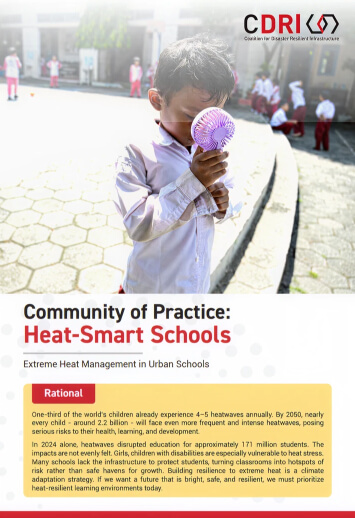Extreme heat is increasingly disrupting education, affecting over 171 million students in 2024 alone. By 2050, nearly all children will face frequent heatwaves, with girls and children with disabilities being especially vulnerable. Many schools lack the infrastructure to protect students, making classrooms unsafe.
This Community of Practice aims to catalyze global dialogue, share best practices, and develop evidence-based guidance for heat-resilient schools. Key themes include heat-related inequities, health protocols, school design, and community roles. The CoP involves over 150 experts and 71 organizations, producing resources for policymakers and school administrators.
Recommendations include governance frameworks, scientific forecasting, child education, addressing root risks, infrastructure adaptation, financial strategies, and future preparedness. Building heat-resilient schools is essential for safeguarding children’s health, learning, and equity in a warming world.
Key points
- Heatwaves threaten children's health, learning, and future development globally.
- Girls and disabled children face greater risks from extreme heat.
- Schools lack infrastructure, becoming unsafe during rising heat conditions.
- Global collaboration needed for heat-resilient school design and policies.
- Schools should act as cooling centres for entire communities.
- Invest in adaptation, education, and science-based heat management strategies.






